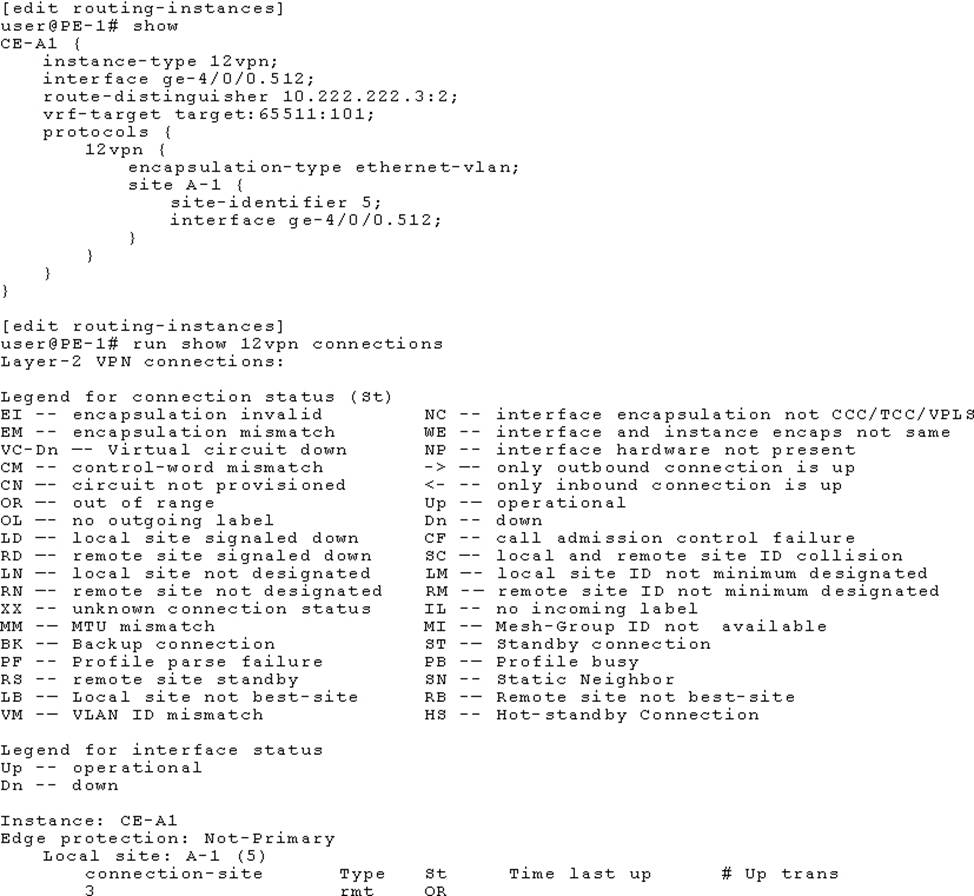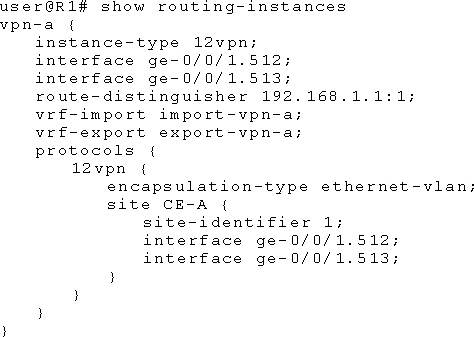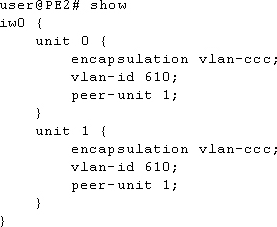Juniper JN0-662 Service Provider Routing and Switching, Professional (JNCIP-SP) Online Training
Juniper JN0-662 Online Training
The questions for JN0-662 were last updated at Apr 24,2025.
- Exam Code: JN0-662
- Exam Name: Service Provider Routing and Switching, Professional (JNCIP-SP)
- Certification Provider: Juniper
- Latest update: Apr 24,2025
In a carrier-of-carrier VPN model, which type of network layer reachability information is used for the MPBGP signaling between CE and PE routers?
- A . flow
- B . labeled-unicast
- C . unicast
- D . inet-vpn
D
Explanation:
Explanation: In a Carrier-of-Carrier VPN environment, specify the inet-vpn address family and unicast traffic type to enable BGP to carry IPv4 network layer reachability information (NLRI) for VPN routes. References: http://www.juniper.net/documentation/en_US/junos15.1/topics/example/mpls-vpn-option2configuration.html
Click the Exhibit button.

Referring to the exhibit, the Layer 2 VPN between PE-1 and PE-2 is not functioning properly.
What must you do to solve the problem?
- A . Set the remote site identifier to 3.
- B . Set the local site identifier to 3.
- C . Set the local site identifier to 1.
- D . Set the remote site identifier to 5.
Click the Exhibit button.

Which two statements are true regarding the output shown in the exhibit? (Choose two.)
- A . Both ESIs are generated from the router ID.
- B . Both ESIs use the same VNI.
- C . The ESI 05:00:00:fe:4d:00:00:56:0e:00 is an auto-generated ESI.
- D . The ESI 00:24:24:24:24:24:24:24:24:24 is an auto-generated ESI.
Click the Exhibit button.

You have configured a BGP-signaled Layer 2 VPN with the configuration shown in the exhibit.
Which two statements are true in this situation? (Choose two.)
- A . Remote site 1 is dual-homed.
- B . The local site is site ID 1.
- C . The route-distinguisher is in the wrong format.
- D . Interface ge-0/0/l.512 is connected to the local site
AB
Explanation:
Reference: https://www.juniper.net/documentation/en_US/junos/topics/usage-guidelines/vpns-configuringrouting-instances-on-pe-routers-in-vpns.html#id-10110155
After committing the following configuration change on your MPLS VPN PE router, all MPLS VPN destinations become unreachable.
![]()
Which additional configuration solves the issue?
- A .

- B .

- C .

- D .

Click the Exhibit button.

You have configured Layer 2 VPN stitching between two Layer 2 circuits on PE2, but traffic is not passing through the VPN.
Referring to the exhibit, what is the problem?
- A . The unit 1 peer unit must be set to 0.
- B . The VLAN IDs must be lower than 512.
- C . The VLAN IDs must be different on each unit.
- D . The peer units must reference the VLAN IDs.
You want to add a new OSPF area to your existing OSPF network, however, this area will not be directly connected to Area 0.
Which feature would you use to complete this task?
- A . routing policy
- B . not-so stubby area
- C . virtual link
- D . Type 10 LSA
Click the Exhibit button.

Referring to the exhibit, which statement is correct?
- A . IP address 192.168.16.5 is on a directly connected interface.
- B . Four routes have been leaked from the Level 2 area to the Level 1 area.
- C . The path to IP address 192.168.16.6 is currently unavailable.
- D . R1 has two Level 2 adjacencies and one Level 1 adjacency to other routers.
Click the Exhibit button.

Referring to the exhibit, what must be added to the existing configuration to ensure that per-prefix load balancing occurs?
- A . multihop
- B . keep all
- C . multipath
- D . family inet unicast
Which statement is correct regarding BGP route reflectors?
- A . The route reflectors must have a private AS number.
- B . The route reflectors must have an EBGP peering session between each other.
- C . The route reflectors must have a cluster ID configured.
- D . The route reflectors must have a different AS number than the clients.
C
Explanation:
Reference: https://www.juniper.net/documentation/en_US/release-independent/nce/topics/example/ routing-protocol-bgp-security-route-reflector-configuring-cli.html
Latest JN0-662 Dumps Valid Version with 66 Q&As
Latest And Valid Q&A | Instant Download | Once Fail, Full Refund

